Themed collection Australia-India Joint Symposium on Smart Nanomaterials

Methane storage in metal organic frameworks
In this applications article (116 references), the use and viability of metal organic frameworks (MOFs) for natural gas storage is critically examined through an overview of the current state of the field.
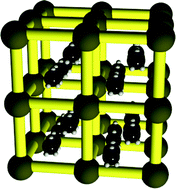
J. Mater. Chem., 2012,22, 16698-16708
https://doi.org/10.1039/C2JM32719H
Highly efficient nanoporous graphitic carbon with tunable textural properties for dye -sensitized solar cells
Nanoporous graphitic carbon (NGC) is synthesized by direct carbonization of iron phthalocyanine (Fe-PC) and 3D mesoporous silica (KIT-6) mixture for the first time, which exhibit tunable surface area and pore volume, as well as superior energy conversion efficiency for dye-sensitized solar cells than activated carbon (AC) and large porous carbon (LPC).
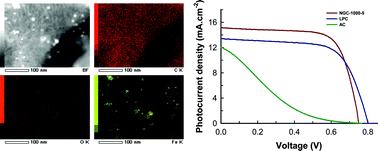
J. Mater. Chem., 2012,22, 20866-20869
https://doi.org/10.1039/C2JM33498D
High throughput theory and simulation of nanomaterials: exploring the stability and electronic properties of nanographene
Mapping the configuration space of nanostructures with atomic scale resolution is now possible with electronic structure simulations, to reveal detail that is often overlooked.
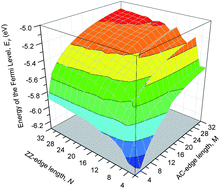
J. Mater. Chem., 2012,22, 18119-18123
https://doi.org/10.1039/C2JM32618C
Microfabrication of mesoporous silica encapsulated enzymes using deep X-ray lithography
Deep X-ray lithography was used to pattern enzymes and luminescent proteins within a mesoporous sol–gel silica scaffold.

J. Mater. Chem., 2012,22, 16191-16195
https://doi.org/10.1039/C2JM32863A
Magnetic framework composites for polycyclic aromatic hydrocarbon sequestration
Superparamagnetic framework composites were fabricated by growing MOF-5 crystals on ferrite nanofibers, demonstrating their ability to sequester carcinogenic molecules and be subsequently collected from solution.
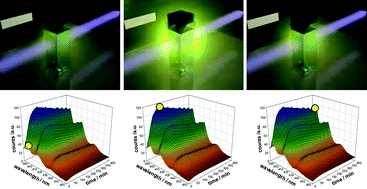
J. Mater. Chem., 2012,22, 11470-11474
https://doi.org/10.1039/C2JM31798B
Enhancing the current density of electrodeposited ZnO–Cu2O solar cells by engineering their heterointerfaces
The use of ZnO seed layers enhances the heterointerface quality and consequently the current density of electrodeposited ZnO–Cu2O solar cells.
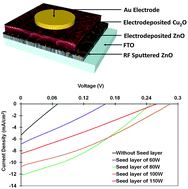
J. Mater. Chem., 2012,22, 21767-21775
https://doi.org/10.1039/C2JM35682A
Mercury vapor sensor enhancement by nanostructured gold deposited on nickel surfaces using galvanic replacement reactions
Galvanically replaced Au–Ni surface based QCMs perform as excellent Hg vapor sensors.

J. Mater. Chem., 2012,22, 21395-21404
https://doi.org/10.1039/C2JM33480A
Investigation of Hg sorption and diffusion behavior on ultra-thin films of gold using QCM response analysis and SIMS depth profiling
We demonstrate that the contribution of Hg adsorption and absorption in a sensor response profile can be distinguished by studying the dynamic response curve of a quartz crystal microbalance based Hg vapour sensor.
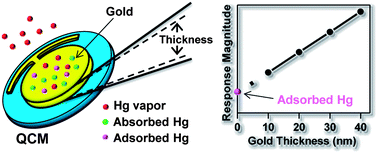
J. Mater. Chem., 2012,22, 20929-20935
https://doi.org/10.1039/C2JM34053D
Modelling polar wurtzite ZnS nanoparticles : the effect of sulphur supersaturation on size- and shape-dependent phase transformations
Equilibrium morphologies of polar wurtzite nanoparticles and shape-dependent phase transformations are revealed with respect to size, temperature, pressure and anion/cation termination.
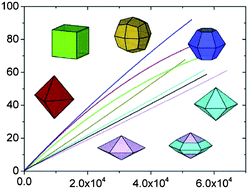
J. Mater. Chem., 2012,22, 18992-18998
https://doi.org/10.1039/C2JM33758D
Stable doped sp2 C-hybrid nanostructures by reactive ion beam irradiation
We explore reactive ion-beam irradiation to synthesise doped C-nanostructured arrays within polymers whose 3-D semiconductive behaviour can be controlled by external fields.
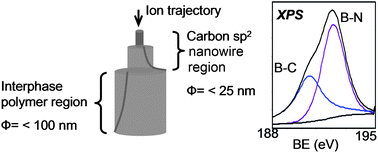
J. Mater. Chem., 2012,22, 18403-18410
https://doi.org/10.1039/C2JM32714G
Nanostructured nickel manganese oxide: aligned nanostructures and their magnetic properties
Assembly of NiMn2O4 particles showing enhanced magnetic susceptibility.
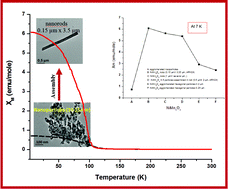
J. Mater. Chem., 2012,22, 18447-18453
https://doi.org/10.1039/C2JM32951D
Surface phase diagram and thermodynamic stability of functionalisation of nanodiamonds
The surface chemistry of diamond nanoparticles is mapped as a function of the relative pressure of hydrogen or oxygen in the surrounding environment.
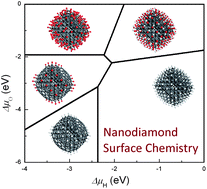
J. Mater. Chem., 2012,22, 16774-16780
https://doi.org/10.1039/C2JM32640J
Long-range ordered lyotropic liquid crystals in intermediate-range ordered protic ionic liquid used as templates for hierarchically porous silica
Hierarchically porous silica can be formed using long-range ordered lyotropic liquid crystals in protic ionic liquids.
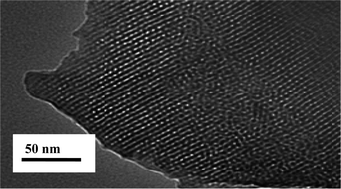
J. Mater. Chem., 2012,22, 10069-10076
https://doi.org/10.1039/C2JM30708A
About this collection
The Australia-India Joint Symposium on Smart Nanomaterials was held at RMIT University, in Melbourne, Australia, in November 2011. This event was supported by the Australian Research Council, Australia India Institute, the Victorian and Australian Government, CSIRO, Alcoa World Alumina and the Australian Academy of Science. The purpose of this symposium was to provide a forum for discussion about all aspects of nanoscience and nanotechnology and to enable young researchers a chance to meet and engage with leading global scientists in the field. RMIT was proud to host this symposium (the first of many planned to be held annually between Australia and India) in celebration of the International Year of Chemistry and in honour of one of the plenary speakers, Professor CNR Rao. The symposium attracted over 150 young and established researchers in the field of Nanoscience from across academia, industry and government, with 2 plenary talks, 20 invited talks and more than 60 poster presentations. The papers in this special issue are based on contributions from this symposium and the support of the Journal of Materials Chemistry in producing this special issue is gratefully acknowledged.
Suresh Bhargava and Salvy P. Russo, Guest Editors
I am delighted that an “Australia-India Symposium on Smart Nanomaterials” was held in 2011 in Melbourne, the symposium being organized by the Royal Melbourne Institute of Technology, Melbourne. I am especially thankful to Prof. Suresh Bhargava and Prof. Salvy Russo for editing the special issue being published by the Journal of Materials Chemistry. The topic of the Conference is of great current interest all over the world. I have published continuously in the Journal of Materials Chemistry since its very inception and it is one of my favourite journals. It is really gratifying that Journal of Materials Chemistry is publishing this special issue of the articles in the symposium held in my name. I am grateful for this.
C.N.R. Rao,
Professor C.N.R. Rao F.R.S.
National Research Professor
Linus Pauling Research Professor &
Honorary President
Jawaharlal Nehru Centre for Advanced Scientific Research, Bangalore, India